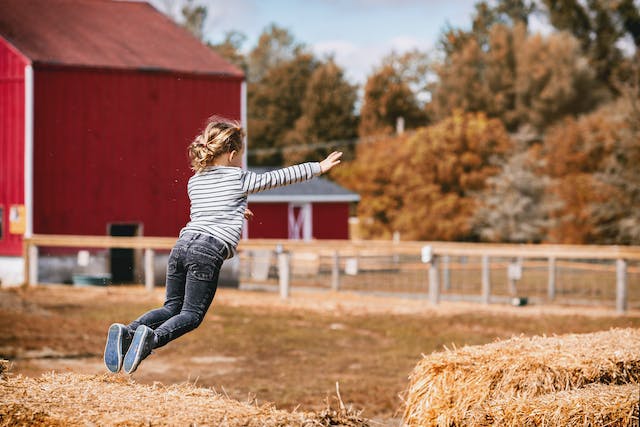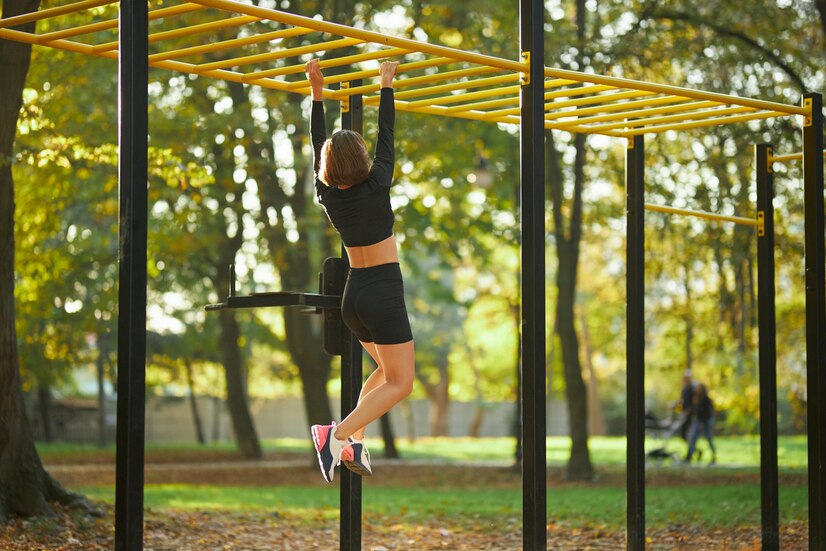Animal motions are an excellent method to “trick” your kids into working out, developing their strength, increasing their range of motion, and having a fantastic exercise. The secret is that kids can have more pleasure walking like ducks or executing frog jumps instead of box jumps, rather than using force to exercise.
But we’re not quadrupeds, amphibians, or water fowl; rather, we’re humans, and our anatomy is entirely distinct from that of the animals we imitate. Because of this, our animal movements differ slightly from those of the real creatures. If you’re an adult practising animal motions for power and mobility, they can even seem different. But these are my top ten animal moves for youngsters.
Duck Walk
Sit in a complete squat with your heels down and your feet angled out 8 to 15% to execute the duck walk. Walk while maintaining your squat posture. Making sure your head doesn’t bob up and down is one indication that you are using correct technique. Duck walking should be done with your head level. This is a great workout for improving hip mobility and quad strength.
Bear Crawl
A bear crawl is quite simple. Beginning on all fours, maintain a straight back and a parallel spine while you move with your hands and feet. Next, move your right arm with your left foot and your left arm with your right foot to perform a contralateral crawl, which is the reverse of moving your opposite arm and leg together. Try crawling left, right, forwards, and backwards as soon as you feel comfortable. Take it a step farther and try crawling back and forth, upstairs and downstairs, even uphill. This exercise activates your shoulders and works your core, making it a great general warm-up for a day of workout. Bear crawling around your house for five minutes every day is one thing to think about. If you just put in five minutes a day, you’ll feel more flexible than you ever imagined.
Hops Bunnies
For balance, squat on your heels and plant your hands lightly on the ground in front of you. Keep your body in a crouching stance and take a few steps forwards without standing up completely. Let your hands rest on the ground, more as a point of reference than as a foundation for support. Build strength in the bottom position of the squat with this exercise.
Walk with Gorillas
Start in a bunny hop-like stance, but place more weight on your hands and slightly broader feet. Put the majority of your weight on your arms and propel your lower body forwards to perform the gorilla walk. Envision yourself as a gigantic gorilla with massive knuckles, vaulting across the jungle like a silverback.
Hop Kangaroo
This is comparable to the bunny hop, only it doesn’t require using your arms. Legs and quadriceps are key components. Continue to jump while keeping your torso more erect. Additionally, you can increase your hip extension slightly throughout the jump to give it more of a leap-like sensation.

Reverse Snake Crawl
Cross your arms and lie down on your back. To crawl backwards, shift your hips, push off with your feet, and pull with your shoulder blades. This motion is very similar to the crawl of a snake. The idea is to use your torso’s gyration primarily and minimise the involvement of your limbs.
Crawling Alligator
Start the alligator crawl by placing your weight on your hands and toes in a low plank posture, similar to the bottom of a push-up. Crawl with your belly and chest slightly above the floor. As you gain confidence, consider increasing your speed from a sluggish start. This is possibly the hardest crawl, but it’s great for developing isometric arm, tricep, and core tension.
Leap of Frog

The frog leap begins with a deep squat. Then, leap as high and far as you can before landing back in a squat and repeating the move. It’s not a race, so make sure you retain technical integrity. Every jump should be the pinnacle of technique and peak output. Avoid continuing the workout if you start to feel exhausted or if you see poor form. Excellent for peak power output is this jump. Should you persist in performing frog jumps well into your 40s, 50s, or beyond, you’ll be well-positioned for sustained physical health.
Monkey Bars: Two Methods
There are two methods for performing the monkey bars.
Bent arms: You can drag yourself over from bar to bar by using your muscles and maintaining your arms flexed or bent. Although it’s the quickest technique to go between the bars, this method is quite taxing on your arms. A fantastic bicep exercise.
Straight arms: If you choose, you can swing from bar to bar by leveraging the momentum created by your swinging torso and legs. It is more important to be in rhythm, have a firm grip, and a secure shoulder girdle to support you throughout the exercise than it is to have powerful arms.
Crab Stroll
With your legs extended in front of you, take a seat on the ground. From there, elevate yourself till your body is free of contact by placing your hands and feet flat on the floor. As you go forwards, backwards, and sideways, keep your hips up. Move diagonally at all times. Left foot, right hand. Right foot, left hand.
How to Apply Animal Motions
Children can employ animal movements at any time of day, but if you’re not sure when to use them, consider the following ideas:
A morning ritual: Perform each animal action for 30 to 60 seconds each morning. It’s a fantastic method to get your blood flowing and exercise throughout the day.
Microworkouts: Perform a minute or two of animal movements approximately every two hours. Make use of them to break up long stretches of time spent sitting on the couch, or even better, promote them while the kids watch TV.
Warm-ups: Animal postures are excellent for preparing the body for a more strenuous exercise. If your child plays soccer, they will do frog jumps, alligator walks, and duck walks. Try bear crawls or straight arm monkey bars if they participate in racquet sports. Raising body temperature, heart rate, and mobilising the targeted muscles and joints are the goals of a warm-up. For all that, animal motions are fantastic.
Animal motions are a fantastic method to improve athletics, have fun, and bolster strength and mobility. Furthermore, they’re excellent exercises for adults as well as children. I appreciate everyone who has read. Be careful.


